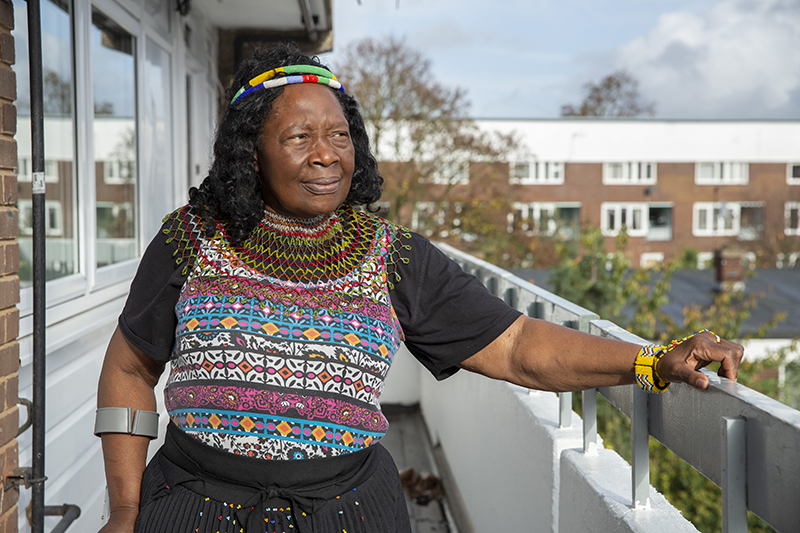One in five older people in the UK who want to move are unable to find and access suitable new homes, new research reveals.
These are the findings published in a new report Finding The Right Place To Grow Older by Manchester Metropolitan University’s Manchester School of Architecture (MSA), in partnership with the Centre for Ageing Better and the Greater Manchester Combined Authority (GMCA).
Researchers from MSA’s Design for Life group - an architecture-led research team aiming to transform the lives of older people by strengthening and connecting community action, strategic policy, and local planning - have found that more than 4 million people aged 55 and above are actively seeking to move properties but cannot find new homes with the right location, tenure, and affordability.
Working with a wide range of partners and stakeholders including local communities and GMCA, the Design for Life team - comprising sociologists, data scientists, housing policy experts and psychologists – spoke to local communities and analysed data.
The new study reveals five distinct identities for older homeowners and renters, and highlights the requirements and barriers they face in finding the right home.
The report challenges the assumption that incentives for downsizing or moving into specialist accommodation are the only housing solutions for older people, and instead calls for town planners and councillors to make housing plans and strategies more responsive to local and personal circumstances to improve housing choices.
Recommendations have been made for the ‘rightplace’ approach to allow older people to find housing which suits their needs and improve their quality of life.
Stefan White, Professor of Architecture at MSA, said: “This important research with the Centre for Ageing Better builds on over a decade of our co-produced and collaborative design research understanding and creating age inclusive homes, neighbourhoods, and cities.
“The Design for Life team believe this new evidence can make a significant contribution to better understanding the housing choices of different groups of older people, supporting local planning to more readily respond to the housing challenges faced by their older residents.
“We believe the innovative policy applications outlined in the report could assist both market-led and social housing providers in their efforts to meet the housing needs of local older people.”
The Design for Life team believe this new evidence can make a significant contribution to better understanding the housing choices of different groups of older people, supporting local planning to more readily respond to the housing challenges faced by their older residents.
Currently, at least two million people over the age of 55 live in homes that fail the minimum Decent Homes Standard while less than one in ten homes in the UK meet even minimum accessibility standards.
The new study builds on previous research commissioned by Ageing Better and GMCA which revealed that very few older people (3.4%) move each year, despite many living in inadequate and inappropriate housing.
The previous study also found that most older people who do move do not ‘downsize’ and those that do only do so by moving to properties with one fewer bedroom.
Researchers instead recommend the ‘rightplace’ approach which allows older people to select the neighbourhood and housing which meets their ambitions and needs to improve their quality of life as they grow older.
The ‘rightplace’ approach is reliant on the availability of the right homes in the right locations amongst a supportive community and neighbourhood, as well as being financially in reach for older people.
Researchers outlined five identities of older people and the distinct requirements needed from a house move and the barriers they face. The team found these identities were defined by their experience of where they live, and not by age, socioeconomic class, or tenure as is often the assumption.
Each of these identities would also require different policy interventions and support programmes to help find the right home for them.
We believe the innovative policy applications outlined in the report could assist both market-led and social housing providers in their efforts to meet the housing needs of local older people.
By bringing together policy analysis of large data with local insights from planning data and direct engagement with residents, planning authorities can create more tailored housing policies to help improve local housing choices for older people and enable people to find the ‘right place’ to grow older.
Dr Carole Easton OBE, Chief Executive at the Centre for Ageing Better, said: “It is abundantly clear that very few older people are currently able to find and access the right properties that could improve their quality of life.
“The solution to the problem is not incentivising or pressurising older people into downsizing. Instead, we need planning and housing to focus more on older people’s needs and deliver the right properties in the right locations and at the right price to give older people greater options than are available now to where and how they live.
“What our study found is that home, the perception of the package of social relationships, services, facilities and accommodation, rather than just the feelings about the quality and shortcoming of their house, provides the clearest indicator of older people’s preference to stay or move from where they live.
The Design for Life group at MSA are currently applying the learning from the Rightplace project in significant planning and development projects in the North West including in the Greater Manchester Ageing in Place Pathfinder programme in partnership with GMCA and the North Manchester General Hospital redevelopment for Manchester Foundation Trust.
The full report Finding The Right Place To Grow Older can be viewed here: https://ageing-better.org.uk/sites/default/files/2023-08/locked-out-presentation.pdf


